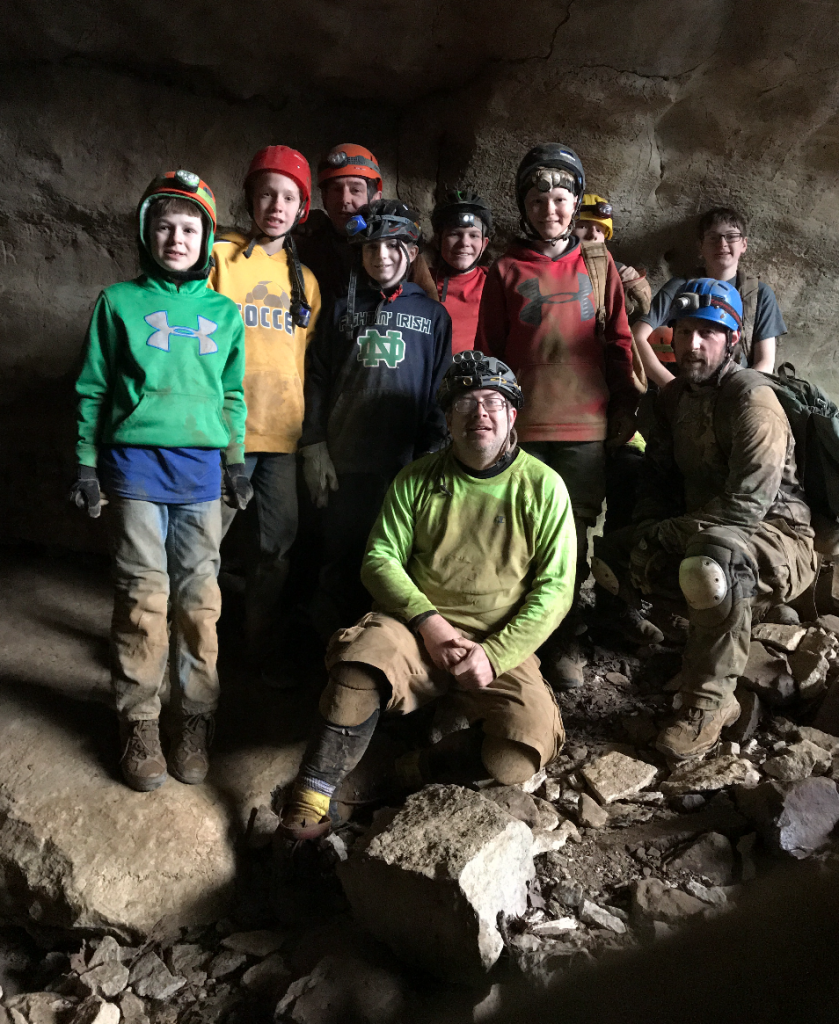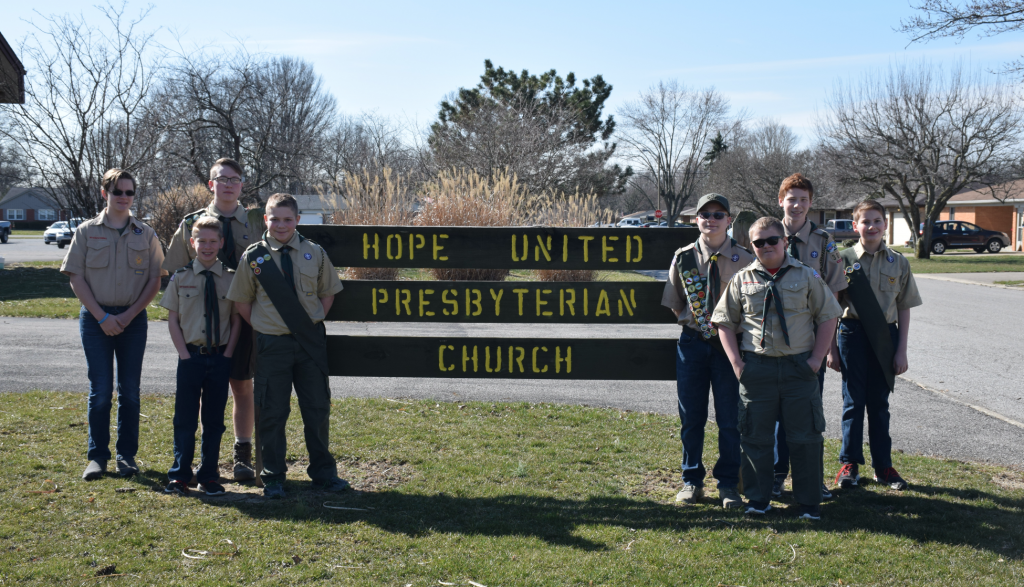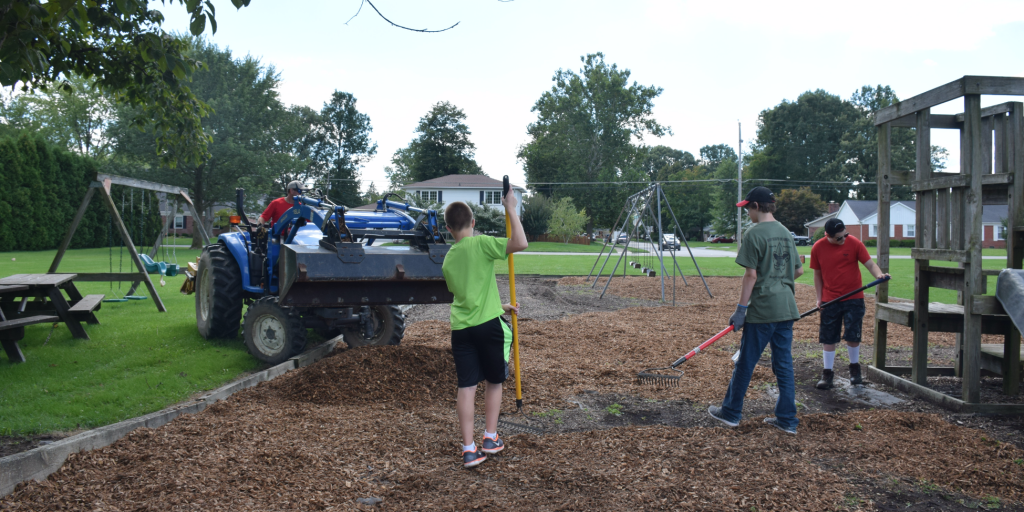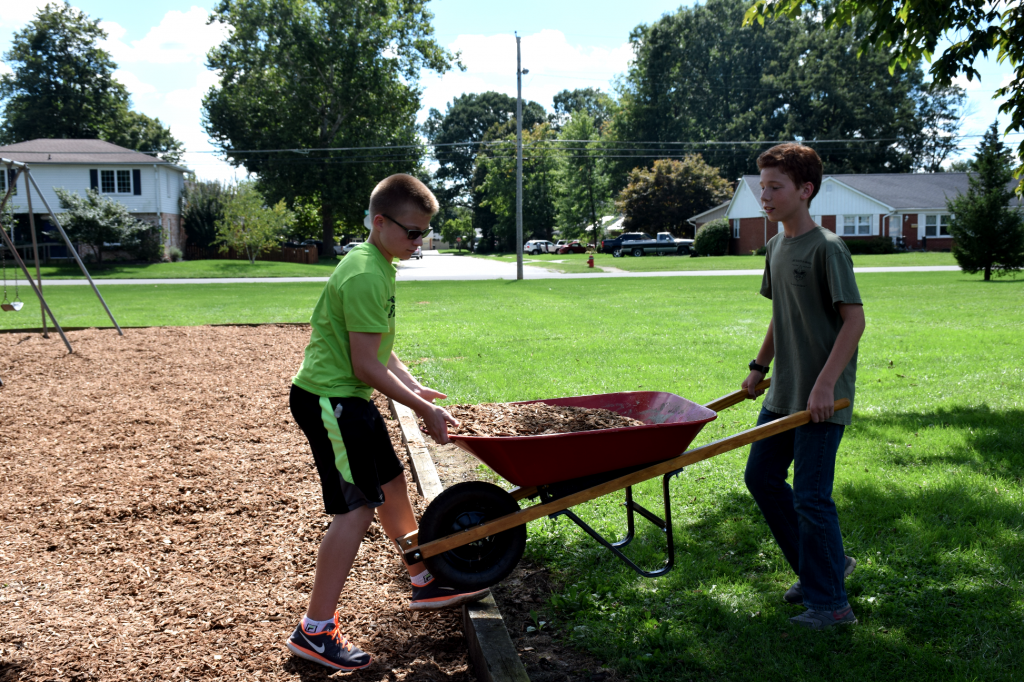The Boy Scouts of America Grows & Transforms Lives
Writer / Christy Heitger-Ewing
Charles Coffelt first joined the Boy Scouts when he was in first grade. He continued through the program, earning his Eagle Scout as a sophomore. Now he’s a leader with Boy Scout Troop 308 and Cub Scout Pack 429. With sons in both programs, Coffelt is passionate about sharing the scouting life and passing along the skills and values he learned through the years.
“I really believe the program helped me mature into the man I am today, and my fervent hope is that all four of my young boys will have a similar experience as they grow into men,” says Coffelt, noting that he still has lasting friendships from his Scouting years. “The program exposes young men to a variety of experiences, from all the outdoor activities that Scouting is typically known for to STEM-related opportunities and Civic and Arts related experiences.”
 The Boy Scouts of America, one of the nation’s largest and most prominent values-based youth development organizations, teaches leadership, builds character, and instills the importance of community service.
The Boy Scouts of America, one of the nation’s largest and most prominent values-based youth development organizations, teaches leadership, builds character, and instills the importance of community service.
“We’re trying to give everybody a guiding light to be a better person,” says Melanie Restivo, Special Education Secretary for Plainfield Community School Corporation and Scout enthusiast. “These kids are getting life lessons they may not fully appreciate until they’re out of the program. I hear from boys now in college who tell me they are just now starting to see all they got from Boy Scouts.”
Restivo has been involved with scouting for the past 16 years. Her oldest son Dominic (now 19 and in his first year at the U.S. Naval Academy) is an Eagle Scout and was involved with Scouts from first through 12th grade.
“The Scouting program provides young adults the opportunity to learn practical skills in a variety of areas,” Dominic says. “It also prepares them for success in a rapidly changing professional world.”
Dominic hits on the mission of the Boy Scouts of America, which is to prepare young people to make ethical and moral choices over their lifetimes. By the time they’ve emerged from the program, they have worked with adults for years, developing skills in interpersonal communication, collaboration, and group dynamics.
“They might be doing a niche project and complain that it’s stupid, but the truth is that they’re learning life skills,” Restive says. “Let’s face it — at some point in all of our lives, we’re going to work with someone we don’t like. These are tools they can take with them going forward.”
The Boy Scouts provide a nice blend of education and fun. Sometimes the group uses meeting times to engage in community service projects or to earn merit badges. Other times meetings are reserved purely for enjoyment.
“You’ve got to have a mix of the two because if it feels too much like a classroom, they won’t want to stay involved,” Restive says. “That goes for adults, too.”
Through the years, Restivo has served in a variety of positions within Boy Scouts, including that of Scout leader. This is due, in part, to the fact that it can be difficult to recruit volunteers.
“Folks often hesitate to give up their weekends,” Restive says. “Others aren’t big into camping.”
But those who are eager to lead do a phenomenal job. Doug Hartman, an adult leader with Troop 308, grew up in a Scouting family, advancing from Tiger Cub all the way up to Eagle Scout.
“I learned and experienced so many fantastic things,” Hartman says. “Now that my son is involved in Boy Scouts, it’s neat to see him enjoying many of these same things. I think it has brought us closer together, and I love it.”
Groups typically meet on a weekly basis. Not every boy will attend each week, however, because by middle school and high school they’re involved in other activities such as band, choir, theatre, and athletics. Restivo moved her troop meeting to Sunday nights to better accommodate schedules.
“You make changes based on the needs of the current group,” Restive says.
Once a month the Boy Scouts participate in different adventure trips such as hiking, caving, canoeing, rock climbing, zip-lining, rappelling, paint-balling, and of course camping.
“If it can be done outside, we’ve probably done it, even down to a good snowball or water gun fight,” Restivo says. The whole idea of Scouting is to expose kids to a variety of things while also helping them bond as a group. Setting up camp requires menu planning, open fire cooking, and dealing with inclement weather or equipment failure.
“It’s about helping kids determine how they’re going to handle whatever life throws at them,” Restivo says.
Summer camp experiences are one way they perfect this skill. There are a variety of campgrounds throughout the Hoosier state that are associated with Boy Scouts of America. One that’s located relatively close is Ransburg Scout Reservation in Bloomington.
“We try to get the boys to one weeklong camp experience each summer,” Restivo says. You never know how such experiences will impact a Scout. Several years ago, Scoutmaster Brian Pace, a geologist with the Indiana Department of Environmental Management, gave an Earth Day presentation to a class of first-graders. After the talk, the wife of Pace’s former Cubmaster approached Pace to ask if it was Scouts that first piqued his interest in geology.
“I paused and told her I didn’t know,” Pace says. “[But Scouts] may have well been a spark that ignited my interest in geology and science.”
Boy Scouts troops go through chartered aith-based, civic, and educational organizations such as churches, rotary clubs, PTAs, fire departments, and recreation centers. Scouts then typically engage in whatever community service project their charter organization is committed to. For instance, Restivo’s Troop 308 group is affiliated with Hope United Presbyterian Church in Plainfield so the boys regularly do grounds clean-up there. Or if the church is hosting a dinner, the boys may help serve food or wash dishes. They also may rake leaves, pull weeds, or trim trees for elderly members of the church.
For their Eagle Scout Projects, Restivo’s boys have revamped the church playground by spreading fresh mulch, staining and sprucing up the equipment, building picnic tables, and putting in a community toy box. Boys have also built bat boxes and benches, cleaned up trails, planted trees, and installed flagpoles.
“A lot of the work is landscaping-based. These young kids have good, strong backs and can recover faster from manual labor,” Restivo says.
Restivo is continually impressed by the positive changes she sees in her students as a result of participating in Boy Scouts and advancing through the chain of command.
“Basically, the way it’s set up, there’s this built-in hierarchical training system,” Restivo says. “Older boys train younger ones on tasks. Then as the younger ones advance, they instruct those below them.”
Restivo loves witnessing the inevitable transformation over time.
“You see them evolve through the various levels of maturity,” says Restivo, whose favorite thing to watch is a shy kid emerge from his shell, come into his own, and take more initiative.
“I like Boy Scouts because we go hiking and camping,” says seventh-grader Avery Hartman. “It’s just a great chance for social interaction.”









